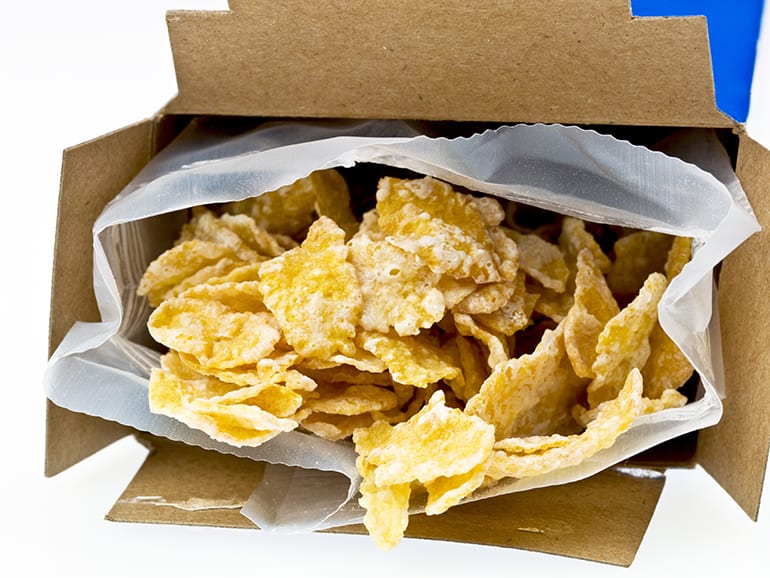
[ad_1]
If you’re beginning a wholesome, satisfying consuming plan, it’s necessary to know the outsized position sugar performs in your total well being. It’s in every thing.
Whereas you could have heard it separated into advanced and easy sugars with various levels of evil assigned to the latter, the reality is extra difficult than that.
What Are Easy Sugars?
A easy sugar is a type of carbohydrate, or saccharide. Completely different types of carbohydrate are categorized by the variety of sugar molecules they comprise: single, double, or a number of. Easy sugars, that are extra quickly-metabolized than their advanced counterparts, comprise one or two sugar molecules.
“Carbohydrates are massive chains of single sugars,” says Krista Linares, RDN, MPH, a registered dietitian nutritionist in Chapel Hill, North Carolina. “The time period ‘easy sugars’ often refers to those single sugars, or typically pairs of sugars, exterior the context of a bigger carbohydrate.”
The next sugars are categorized as easy carbs:
- Monosaccharides: These single-molecule carbohydrates are the only sugars and are the constructing blocks from which all carbs are made. Examples embody glucose and fructose.
- Disaccharides: These type when two monosaccharides mix. An instance is sucrose, a.okay.a. desk sugar.
The next sugars are categorized as advanced carbs:
- Oligosaccharides: This type of carbohydrate incorporates three to 10 single sugars.
- Polysaccharides: Usually, these carbs comprise greater than 10 monosaccharides. Widespread polysaccharides embody starch and cellulose present in grains, tubers, greens, fruits, and different meals excessive in fiber.
What’s the Downside With Easy Sugars?
Easy sugars — particularly added ones — burn quick, probably spiking blood glucose ranges and setting you up for a fast crash.
“Easy carbohydrates reminiscent of desserts, white rice, and ice cream break down rapidly as soon as contained in the physique,” says Carrie Lam, MD, DABFM, a doctor in Loma Linda, California.
“This causes speedy spikes in blood sugar ranges and subsequent valleys when the sugar is absorbed.” That invariably leaves you craving a hasty resupply, which is what usually results in weight achieve (amongst different potential issues).
For many of us, Lam says, meals containing easy carbs could be detrimental to our well being.
“Easy sugar” vs. “added sugar”
Whereas usually one and the identical, there’s an necessary distinction between the phrases “easy sugar” and “added sugar.” Easy sugar can happen naturally in meals however can also be added to packaged and processed meals.
It’s this distinction that may dictate how a easy sugar is metabolized by the physique. For instance, easy sugar is a pure part of fruit, which additionally incorporates fiber.
It’s fiber that helps sluggish the discharge of those sugars into the bloodstream, making them much less more likely to spike blood glucose ranges and, subsequently, much less dangerous to our metabolism. So it helps to take the entire meals into consideration when evaluating its sugar content material.
The best way to Spot Easy Sugars
Added sugar lurks in locations you’d by no means count on — together with some whole-wheat breads, pasta sauces, and low-fat merchandise like flavored yogurt and ice cream.
Through the low-fat craze of the ’80s and ’90s, meals producers eliminated fats from merchandise however needed to retain taste. Guess what they selected in its place?
On diet details labels, sugar has many aliases. “Widespread names for sugar you may even see embody cane sugar, cane juice, corn syrup, fructose, glucose, sucrose, and turbinado sugar,” says Linares.
Widespread sources of easy sugars embody:
- Desk sugar (sucrose)
- White rice
- White flour and white breads
- Processed breakfast cereals
- Baked items like desserts, cookies, and pastries
- Soda
- Honey
- Chocolate
- Fruit juice
- Jelly and jam
To identify these easy sugars, all the time test the diet details label, even for those who’re shopping for a product you suppose is wholesome. Select one with little or no sugar and as a lot fiber and as few components as doable.
Meals producers are required to specify added sugar quantities on a separate line, so regulate this quantity.
Ought to I Lower Out Easy Sugars Utterly?
As defined above, naturally occurring sugar from actual meals is completely regular to eat. However added sugar could be detrimental to your well being and needs to be consumed judiciously.
The FDA’s dietary tips say it is best to restrict added sugar to 10 p.c of your day by day energy.
To place it visually: The American Coronary heart Affiliation recommends that males eat not more than 9 teaspoons (36 grams) of added sugar per day and that girls restrict themselves to six teaspoons (24 grams) or much less.
The fact: the common American consumes about 17 teaspoons (round 71 grams) day by day. That’s partly as a result of many people don’t notice simply how a lot sugar lurks in sweetened drinks and seemingly wholesome meals.
A single can of normal Coke incorporates 39 g of sugar. One cup of apple juice has 24 grams. And one 5.3-ounce cup of nonfat Chobani strawberry yogurt incorporates 14 g of sugar. (Versus simply 5 g of sugar of their plain yogurt.)
“The dangers of added sugar are the identical because the dangers of too many carbohydrates normally, particularly extra sugar with out protein, fiber, or fats,” says Linares. “This doesn’t imply that folks want to chop sugar out of their weight loss plan utterly. As a substitute, I like to recommend pairing sugar with protein or fats to decelerate your physique’s absorption of the sugar.”
For instance, you may pair a number of squares of darkish chocolate with a tablespoon of almond butter, or use honey as a topping for plain Greek yogurt.
[ad_2]


